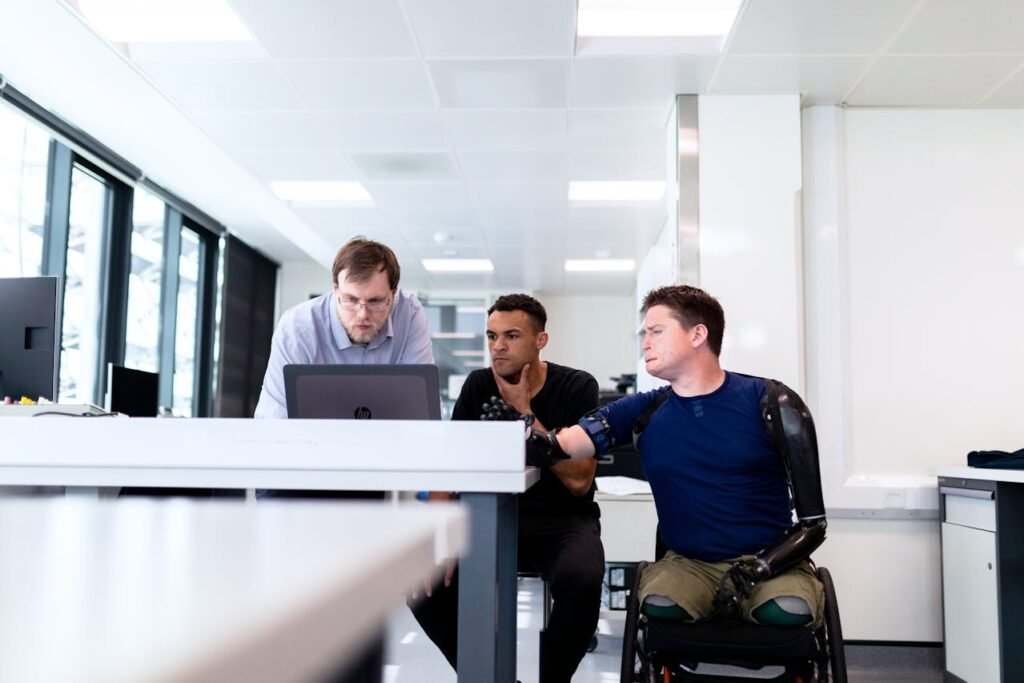Losing a leg can seem like an overwhelming challenge, but modern leg prosthetics are here to make life more manageable, restoring mobility and confidence. These advanced devices come in various forms, tailored to meet specific needs—whether it’s walking to work, climbing stairs, or even competing in sports. In this article, we’ll break down everything you need to know about leg prosthetics, from how they work to the differences between everyday models and those designed for athletic performance.
How Leg Prosthetics Work
Leg prosthetics are engineered to replicate the function of a natural leg, allowing users to walk, run, or stand with ease. While every prosthetic is unique, they all share some core components.
The key parts include the socket, which connects the prosthetic to the residual limb, the pylon, which serves as the framework, and the foot or knee unit, which provides movement and stability. Together, these components work in harmony to support the user’s weight and replicate natural motion.
The Core Functionality of Leg Prosthetics
The foundation of any leg prosthetic lies in its ability to bear weight and facilitate movement. This involves a carefully balanced interplay of components such as the socket, which ensures a secure fit to the residual limb, and the pylon, which serves as the structural backbone. The terminal device—either a foot or knee unit—completes the system by replicating motion.
In more advanced prosthetics, these components are connected by cutting-edge technology, such as hydraulic systems or microprocessors, which dynamically adjust to the user’s movements.
For instance, a microprocessor-controlled knee can analyze the user’s gait in real time, enabling smoother and more natural transitions between walking and standing.
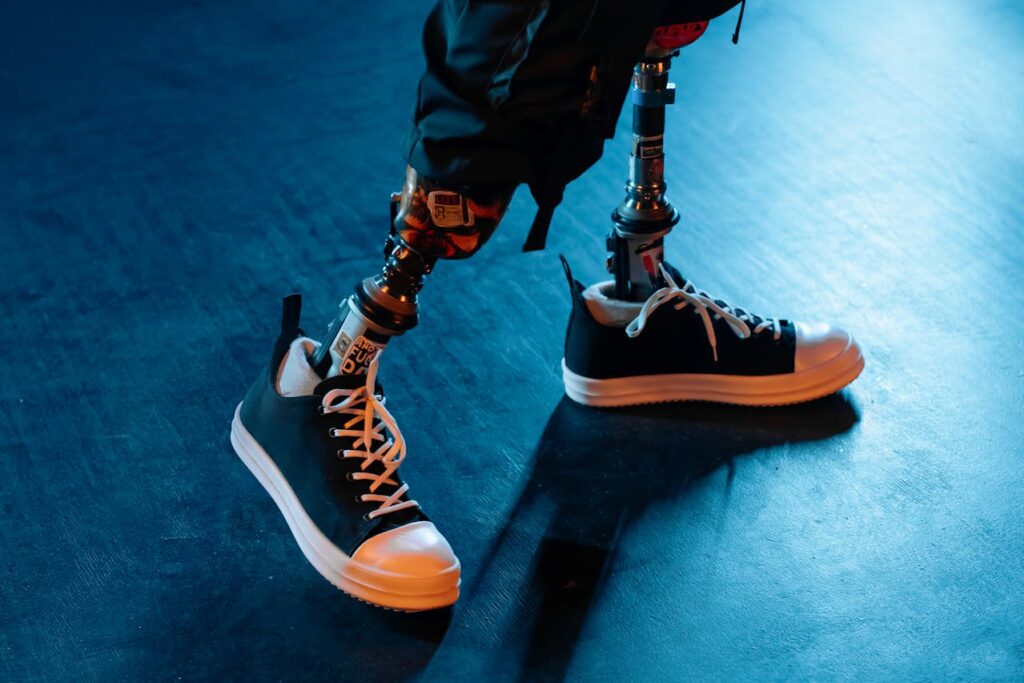
The Role of Suspension Systems
One often overlooked but critical aspect of prosthetic function is the suspension system. This mechanism secures the prosthetic to the user’s body, ensuring it remains stable during movement.
For users, the suspension system can significantly impact comfort and usability, while for businesses, it presents an opportunity to differentiate their products through innovation.
Improved suspension designs, such as vacuum-assisted systems, provide a snug, reliable fit that minimizes movement between the residual limb and the socket.
This not only enhances comfort but also reduces wear and tear on both the prosthetic and the user’s skin. By investing in research and development in this area, businesses can create solutions that set new standards in fit and performance.
Technology Integration in Modern Prosthetics
The integration of smart technology into leg prosthetics has transformed how they work, creating a seamless experience for users. Sensors embedded within the prosthetic can measure variables like pressure, stride length, and speed, feeding this data into a processor that makes real-time adjustments.
This allows the prosthetic to adapt to changing terrains or activities, such as shifting from walking on flat surfaces to climbing stairs.
For businesses, the inclusion of these advanced features is more than just a selling point—it’s an opportunity to provide a personalized experience.
By offering prosthetics with adjustable settings that users can control through apps, companies empower individuals to tailor their devices to their unique needs. This level of customization enhances user satisfaction and builds brand loyalty.
The Importance of Material Selection
Materials play a critical role in the effectiveness of leg prosthetics. Lightweight yet durable options like carbon fiber and titanium are commonly used to reduce fatigue while maintaining strength and stability.
For businesses, material choice isn’t just a technical decision—it’s a chance to align with user priorities such as comfort, aesthetics, and sustainability.
Exploring sustainable materials and manufacturing processes can position a company as a leader in environmentally conscious design. For example, using recyclable components or adopting 3D printing techniques to minimize waste adds both practical and ethical value to the product.
This approach not only meets the growing demand for sustainable solutions but also enhances the company’s reputation.
Dynamic Adaptability for Diverse Lifestyles
The true measure of how a leg prosthetic works lies in its ability to adapt to the user’s lifestyle. Everyday prosthetics need to provide reliable functionality for walking, standing, and other routine activities. Meanwhile, models designed for active individuals or athletes must handle intense physical demands like running or jumping.
Businesses can gain a competitive edge by focusing on versatility. Developing modular prosthetics with interchangeable components allows users to switch between everyday and specialized functions without needing multiple devices.
For example, a prosthetic that can accommodate both a standard foot and a high-performance running blade ensures the user is prepared for any situation.
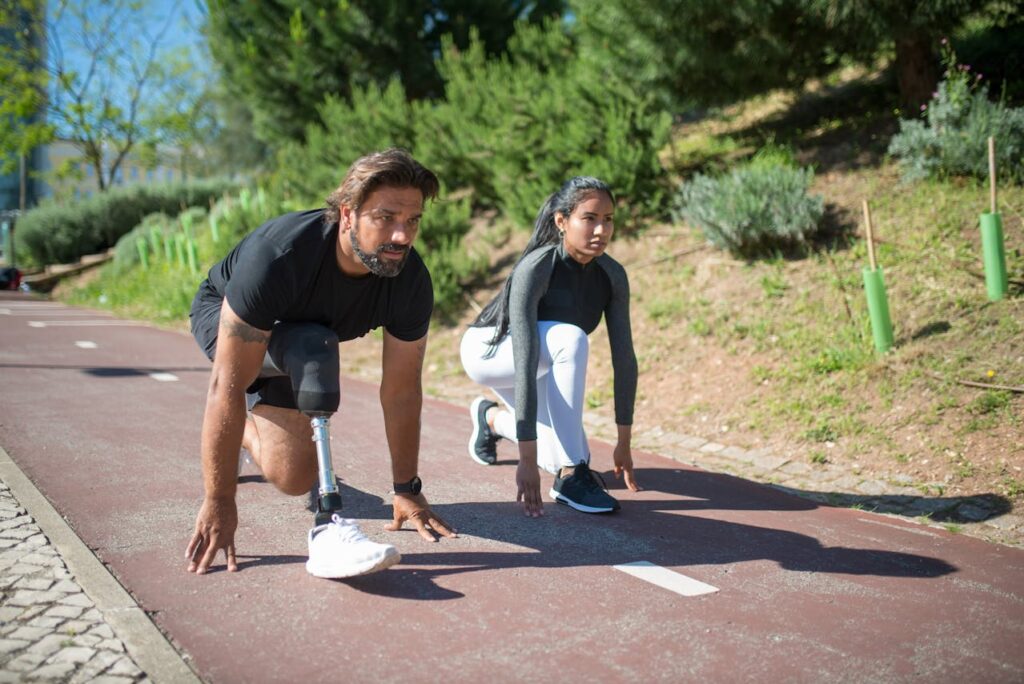
Enhancing User Experience with Training and Support
No matter how advanced a prosthetic is, its true potential can only be realized through proper training and support. Learning to use a prosthetic involves building muscle memory, adapting to new mechanics, and overcoming psychological barriers. For businesses, this represents a critical touchpoint in the user journey.
Providing comprehensive onboarding programs, including physical therapy and gamified rehabilitation exercises, ensures users feel confident and capable with their prosthetic.
Additionally, offering accessible customer support—such as live chat options or local service centers—helps users troubleshoot issues and maintain their devices with ease.
Everyday Prosthetics: A Practical Solution
For many users, the primary goal of a leg prosthetic is to regain independence in daily life. Everyday prosthetics are designed with comfort and functionality in mind, making them ideal for tasks like grocery shopping, commuting, or spending time with family.
One of the key features of everyday leg prosthetics is their lightweight design. By using materials like carbon fiber and titanium, manufacturers create devices that are both strong and easy to wear for extended periods. Additionally, these prosthetics often come with adjustable components, allowing users to fine-tune the fit for maximum comfort.
At Robobionics, we focus on creating everyday leg prosthetics that are not only durable but also affordable. By using advanced manufacturing techniques like 3D printing, we ensure that our products are accessible to a wide range of users while maintaining the highest standards of quality.
Fostering Innovation Through Feedback
The process of understanding how leg prosthetics work doesn’t end with their design or delivery. Continuous innovation relies on feedback from users, who can provide valuable insights into the practical aspects of their prosthetics.
Businesses that actively engage with their customer base—through surveys, focus groups, or social media—can identify pain points and opportunities for improvement.
For instance, feedback about discomfort during prolonged use might lead to the development of new padding materials or socket designs. Similarly, insights about difficulties on uneven terrain could inspire enhancements to foot units or suspension systems.
By treating feedback as a resource for growth, businesses not only improve their products but also build lasting relationships with their users.

Sports Prosthetics: Designed for Performance
For individuals with active lifestyles or those pursuing athletic goals, sports prosthetics open up a world of possibilities. Unlike everyday models, sports prosthetics are engineered to handle intense physical activity, providing the performance and durability needed for running, jumping, or even competitive events.
How Sports Prosthetics Differ
Sports prosthetics prioritize functionality and performance above all else. While everyday prosthetics focus on comfort and versatility for routine tasks, sports models are designed for specific activities.
For example, a running prosthetic often features a blade-like foot made from carbon fiber, which delivers powerful energy return and helps athletes achieve a natural stride.
Additionally, sports prosthetics are often more robust, built to withstand high-impact forces. This makes them ideal for activities like sprinting, long-distance running, or basketball.
The knee units in sports prosthetics are also highly specialized, providing swift and seamless motion transitions to accommodate rapid changes in pace or direction.
Innovations in Sports Prosthetics
The evolution of sports prosthetics has been nothing short of revolutionary. Advancements in materials and design have resulted in lighter, stronger, and more efficient models. Today, athletes can choose from a wide range of options tailored to their sport and performance level.
Some prosthetics are even designed to mimic the biomechanics of a natural leg. For instance, running blades use curved designs that store and release energy with every stride, enabling athletes to run faster and with less fatigue. These innovations have helped many amputees compete at the highest levels, including the Paralympics.
At Robobionics, we’re committed to pushing the boundaries of what sports prosthetics can achieve. By collaborating with athletes and leveraging cutting-edge research, we create solutions that deliver both power and precision.
The Fitting Process: A Key to Success
Whether you’re using an everyday prosthetic or a sports model, the fitting process is essential. A well-fitted prosthetic is not only more comfortable but also more effective in restoring mobility and enhancing performance.
Consultation and Evaluation
The journey begins with a detailed consultation to assess the user’s needs, goals, and physical condition. Factors like the level of amputation, the user’s weight, and their activity level all play a role in determining the most suitable prosthetic.
For athletes, this step may also include an analysis of their sport-specific requirements.
At Robobionics, we work closely with users during this phase, taking precise measurements and using advanced imaging technology to create a prosthetic that fits perfectly. This ensures a secure and comfortable connection between the residual limb and the socket.
Adjustments and Trials
After the initial fitting, users typically go through a trial period to fine-tune the prosthetic. This stage allows for adjustments to the alignment, suspension, and other components to optimize functionality. During this time, users also receive training to familiarize themselves with the prosthetic and learn how to use it effectively.
For sports prosthetics, the trial phase may involve on-field testing to ensure the device performs well under real-world conditions. Athletes often work with prosthetists and trainers to refine their technique and maximize the benefits of their prosthetic.
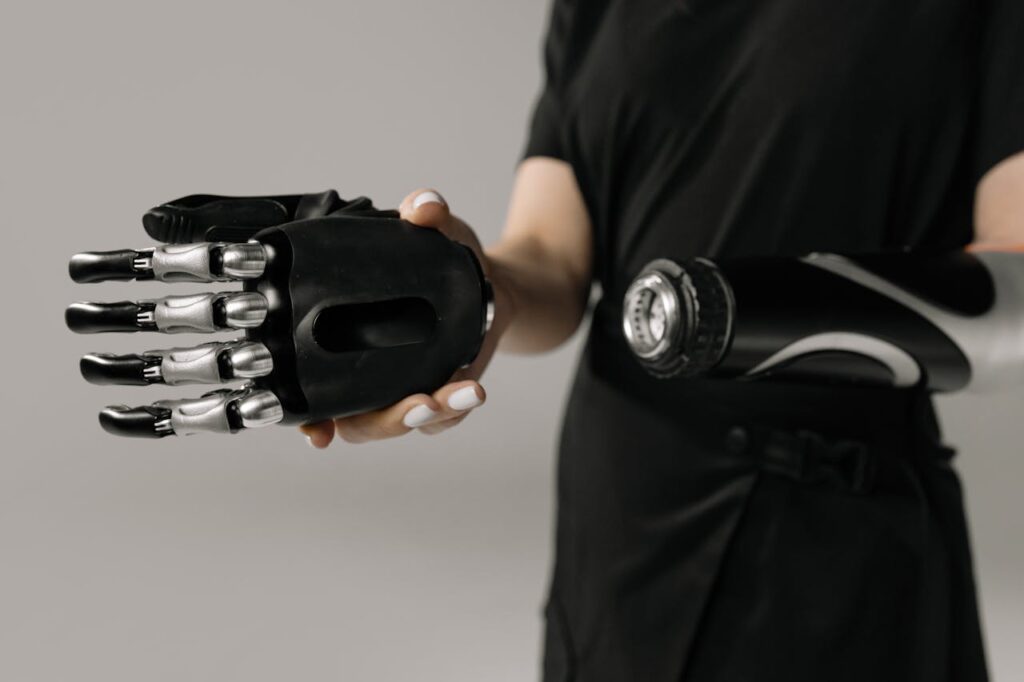
Rehabilitation: Building Strength and Confidence
Adapting to a leg prosthetic, whether for everyday use or sports, requires more than just the right device. Rehabilitation plays a vital role in helping users regain strength, mobility, and confidence.
The Role of Physical Therapy
Physical therapy is often the cornerstone of successful rehabilitation. By focusing on exercises that build strength and improve balance, users can learn to move naturally with their prosthetic.
For sports enthusiasts, therapy may also include sport-specific drills to enhance performance and prevent injuries.
At Robobionics, we take rehabilitation a step further by offering gamified programs that make the process engaging and enjoyable. These interactive exercises help users master their prosthetics while having fun, creating a positive and empowering experience.
Creating a Personalized Rehabilitation Journey
Every individual’s journey with a prosthetic limb is unique, shaped by their physical condition, goals, and personal experiences. Rehabilitation programs must reflect this diversity, offering tailored solutions that adapt to the user’s evolving needs.
Businesses can take a proactive role in this process by collaborating with healthcare professionals, physical therapists, and even psychologists to create holistic, user-focused rehabilitation plans.
For example, a user transitioning to an everyday leg prosthetic may initially focus on balance and walking mechanics. Over time, their goals might expand to include running or climbing stairs.
By anticipating these changes and providing adaptable rehabilitation tools, businesses can ensure that users feel supported every step of the way.
Leveraging Gamification to Enhance Engagement
One of the most effective ways to make rehabilitation engaging is through gamification. By incorporating elements like challenges, rewards, and real-time feedback, users are more likely to stay motivated and committed to their training.
Businesses can integrate gamified exercises into their rehabilitation programs, allowing users to practice movements in an enjoyable and interactive manner.
Imagine a virtual environment where users can simulate activities like hiking or dancing, receiving instant feedback on their performance. Such tools not only make rehabilitation more enjoyable but also help users build confidence in real-world scenarios.
At Robobionics, we’ve embraced this approach with our gamified rehabilitation solutions, which are designed to make the process as engaging as it is effective.
Addressing Emotional Resilience
Adapting to a leg prosthetic isn’t just a physical challenge—it’s an emotional one as well. Many users experience feelings of self-consciousness or frustration as they navigate this new phase of life.
Rehabilitation programs should include components that address these emotional hurdles, fostering a positive mindset and building self-esteem.
Businesses can support this aspect of rehabilitation by creating peer mentorship opportunities, where experienced prosthetic users guide newcomers through the process.
This shared experience helps users feel understood and provides practical advice from those who have been in their shoes. Additionally, partnerships with mental health professionals can offer users the tools they need to manage anxiety or overcome setbacks.
Community-Driven Rehabilitation
Community plays a powerful role in the rehabilitation process. For many users, connecting with others who share similar experiences provides both motivation and a sense of belonging.
Businesses can facilitate these connections by organizing events, online forums, or support groups where users can share their progress, celebrate milestones, and learn from each other.
A company might, for instance, host a “Rehabilitation Day” where users can participate in workshops, test new training tools, or showcase their achievements. These events not only enhance the rehabilitation experience but also strengthen the bond between users and the brand, creating a loyal and engaged community.
Long-Term Support: Ensuring Lifelong Mobility
Using a leg prosthetic is a journey that evolves over time. As users adapt to their devices and their needs change, ongoing support becomes crucial to ensuring long-term success. For businesses in the prosthetics industry, providing comprehensive support services is a way to foster trust and loyalty while enhancing user outcomes.
Maintenance and Upgrades
Every prosthetic requires routine maintenance to function optimally. Over time, components like sockets, pylons, or foot units may experience wear and need replacement or adjustment. Advanced prosthetics with microprocessors or hydraulic systems may also require periodic software updates or recalibration.
Offering accessible and efficient maintenance services is key to keeping users mobile and satisfied. At Robobionics, we’ve streamlined the repair and upgrade process through our localized service centers, reducing downtime and ensuring that users can continue their routines without disruption.
Upgrades are another important aspect of long-term care. As technology advances, users may wish to enhance their prosthetics with new features, such as lighter materials, improved shock absorption, or smarter control systems.
Businesses that stay at the forefront of innovation can offer these enhancements, allowing users to benefit from the latest advancements without needing to replace their entire prosthetic.
Personalized Follow-Ups
A one-size-fits-all approach rarely works in prosthetics. Each user’s journey is unique, and personalized follow-ups can make a significant difference in their experience.
Regular check-ins with prosthetists allow businesses to identify and address potential issues early, ensuring that the prosthetic continues to meet the user’s needs.
For sports users, follow-ups can also provide valuable insights into performance improvements and adjustments required for optimal results. By maintaining an ongoing dialogue with users, businesses demonstrate a commitment to their well-being and success.
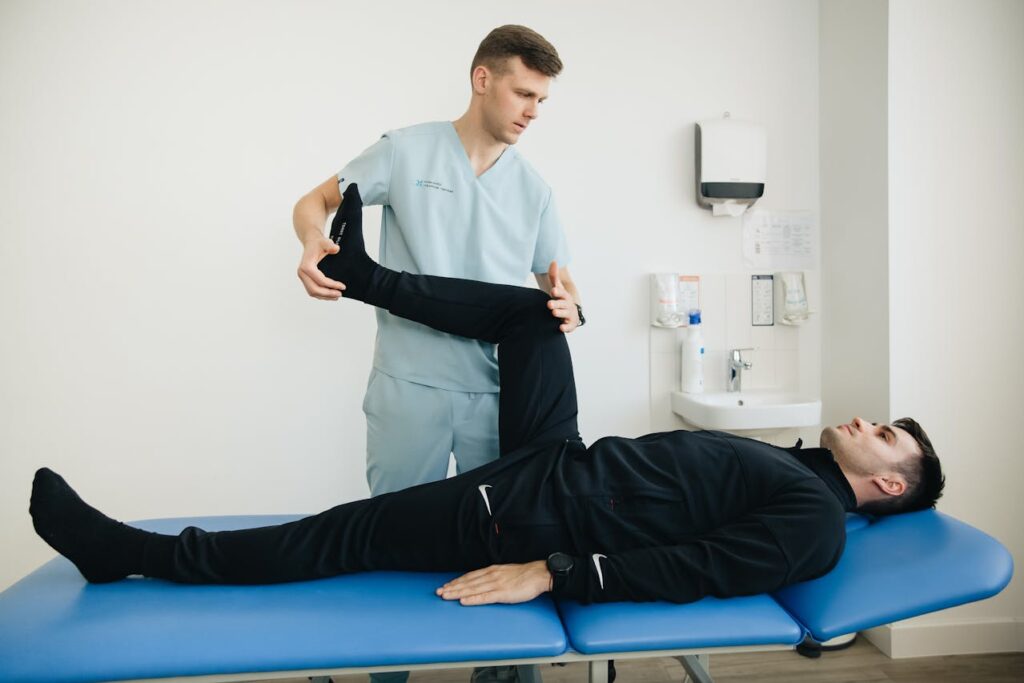
Innovations Shaping the Future of Leg Prosthetics
The world of leg prosthetics is continuously evolving, driven by breakthroughs in science, engineering, and design. These innovations are not just making prosthetics more functional—they’re reshaping the way users interact with their devices and the world around them.
Smart Prosthetics
One of the most exciting developments in prosthetics is the integration of smart technology. Leg prosthetics with embedded sensors and microprocessors can now adjust in real time to changes in terrain, speed, or user movements. These intelligent systems create a smoother, more natural gait, reducing strain on the body and enhancing comfort.
For sports models, smart prosthetics are especially transformative. They allow athletes to adapt to dynamic conditions, such as uneven tracks or rapid directional changes, providing a competitive edge.
At Robobionics, we’re exploring how machine learning can further enhance these capabilities, creating prosthetics that learn and evolve with the user.
Sustainable Materials and Manufacturing
Sustainability is becoming a growing focus in prosthetics manufacturing. By using eco-friendly materials and adopting energy-efficient production methods, companies can reduce their environmental impact while creating durable and lightweight products.
For businesses, embracing sustainability isn’t just about corporate responsibility—it’s a way to meet the growing demand for environmentally conscious solutions.
At Robobionics, we’re committed to this vision, incorporating 3D printing and recyclable materials into our designs to ensure that our products are as sustainable as they are effective.
How Businesses Can Meet User Needs
For companies in the prosthetics industry, success hinges on understanding and meeting the diverse needs of users. This requires a user-centric approach that goes beyond simply delivering a product.
Empowering Users with Education
Many first-time prosthetic users feel overwhelmed by the technical aspects of their devices. Businesses can alleviate this by providing clear, easy-to-understand resources that explain how to use, maintain, and maximize the benefits of their prosthetics.
Interactive tutorials, instructional videos, and one-on-one training sessions can all play a role in empowering users with knowledge.
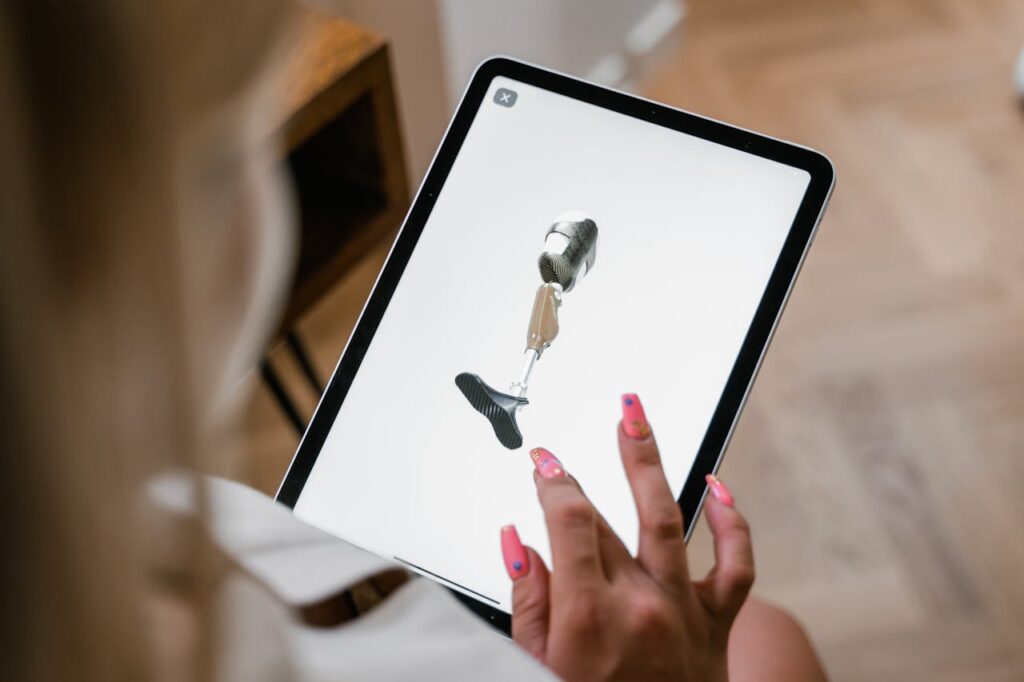
Creating a Supportive Ecosystem
A prosthetic is just one piece of the puzzle. To truly support users, businesses must create an ecosystem that addresses every aspect of their journey. This includes connecting users with physical therapists, offering access to rehabilitation programs, and building communities where users can share their experiences and advice.
For example, Robobionics regularly organizes workshops and events where users can meet industry experts, try new technologies, and connect with others on similar paths. These initiatives not only enhance the user experience but also foster a sense of belonging and support.
Conclusion
Leg prosthetics are much more than medical devices—they are tools of empowerment. Whether designed for everyday use or high-performance sports, these innovative solutions enable users to reclaim their independence, pursue their passions, and embrace life with confidence.
For businesses, the opportunity lies in not just creating cutting-edge products but also delivering a holistic experience that addresses every facet of the user’s journey. By combining innovation, education, and unwavering support, companies can redefine what’s possible in prosthetic care.



